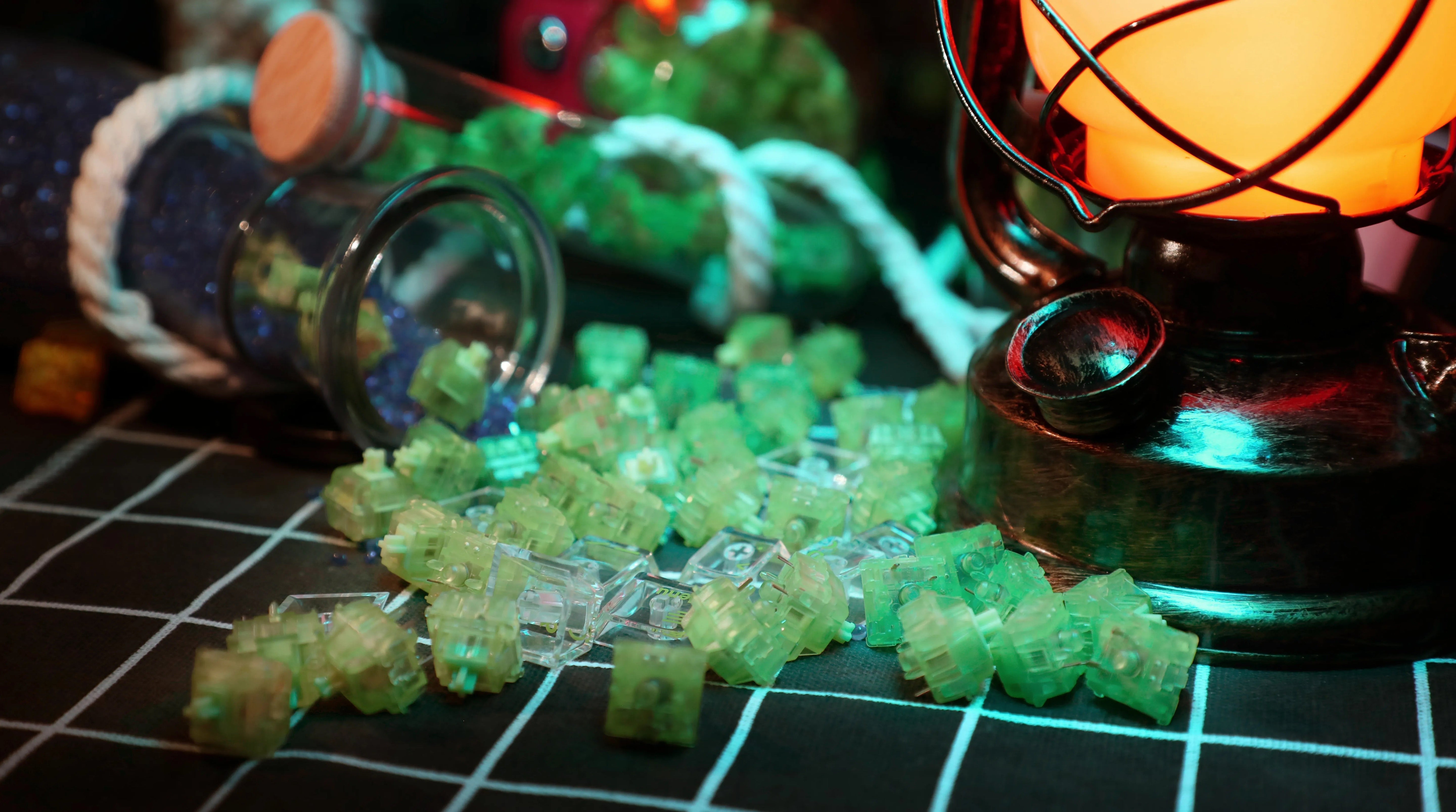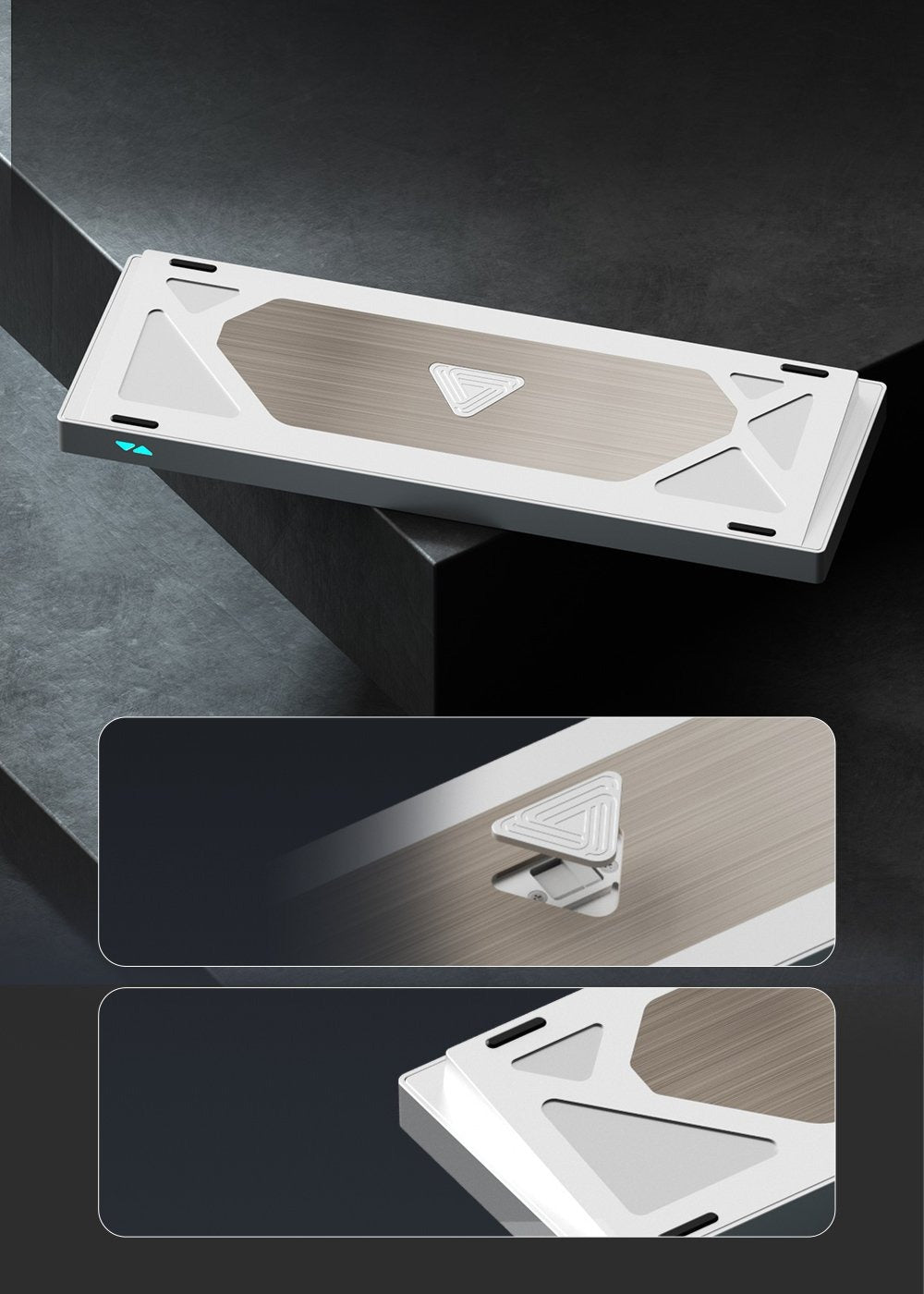Key switches are the heart of any mechanical keyboard, determining how a keystroke is registered and how it feels to type. But what exactly happens when you press a key? The actuation process involves electrical and mechanical components working together to translate finger movement into digital input. In this blog, we’ll break down the science behind key switch actuation and how different switch types impact the typing experience.
What Is Key Switch Actuation?
Actuation is the point at which a key press is recognized by the keyboard and sent as an input signal to the computer. This process is influenced by several factors:
-
Actuation Force – The amount of pressure needed to activate the switch.
-
Actuation Point – The distance a key must travel before registering an input.
-
Reset Point – The distance a key must return to before it can be actuated again.
-
Switch Type – Mechanical, optical, and Hall Effect switches all have different actuation mechanisms.
The Mechanical Process Behind Actuation
When you press a mechanical key switch, a sequence of events occurs within milliseconds:
-
Key Press Initiation – Your finger applies force to the keycap, pushing down the switch stem.
-
Compression of the Spring – The spring beneath the stem compresses, providing resistance.
-
Contact Mechanism Activation – In traditional mechanical switches, two metal contacts touch, completing an electrical circuit.
-
Signal Sent to the PCB – The completed circuit sends a signal to the keyboard’s PCB (Printed Circuit Board), registering the keypress.
-
Key Reset – When released, the spring pushes the keycap back to its original position, breaking the circuit and preparing the switch for the next press.
Different Actuation Mechanisms
1. Mechanical Switch Actuation
Traditional mechanical switches use metal contact points to complete a circuit. The three main types are:
-
Linear Switches – Smooth keystrokes with no tactile bump or audible click.
-
Tactile Switches – Feature a small bump at the actuation point for feedback.
-
Clicky Switches – Provide both tactile feedback and an audible “click” sound.
2. Optical Switch Actuation
Optical switches use infrared light beams instead of metal contacts. When pressed, the stem interrupts the beam, sending a signal. This method results in:
-
Faster response times
-
No metal contact wear and tear
-
Increased switch lifespan
3. Hall Effect Switch Actuation
Hall Effect switches use magnets and sensors instead of physical contacts. The switch stem moves a magnet closer to a sensor, changing the magnetic field and registering input. This allows:
-
Adjustable actuation points
-
Rapid key response without debounce delay
-
High durability due to no physical contact
Factors Affecting Actuation Performance
1. Actuation Force
-
Lighter actuation (e.g., 35g–50g) enables faster keystrokes, ideal for gaming.
-
Heavier actuation (e.g., 60g–80g) reduces accidental presses, preferred for typing accuracy.
2. Actuation Point
-
Shallow actuation points (1.0mm–1.5mm) provide quicker responses for gaming.
-
Deeper actuation points (2.0mm–2.5mm) offer better control for typing tasks.
3. Reset Point and Debounce Delay
-
A high reset point means faster key resets, crucial for rapid keystrokes.
-
Optical and Hall Effect switches have zero debounce delay, making them highly responsive.
Conclusion
Key switch actuation is a complex process that determines the speed, feel, and efficiency of your keyboard. Whether you prefer the smooth glide of linear switches, the feedback of tactile switches, or the advanced technology of optical and Hall Effect switches, understanding how actuation works can help you make an informed decision for your ideal keyboard setup. By considering factors like actuation force, actuation point, and switch type, you can optimize your typing or gaming experience to match your preferences.






